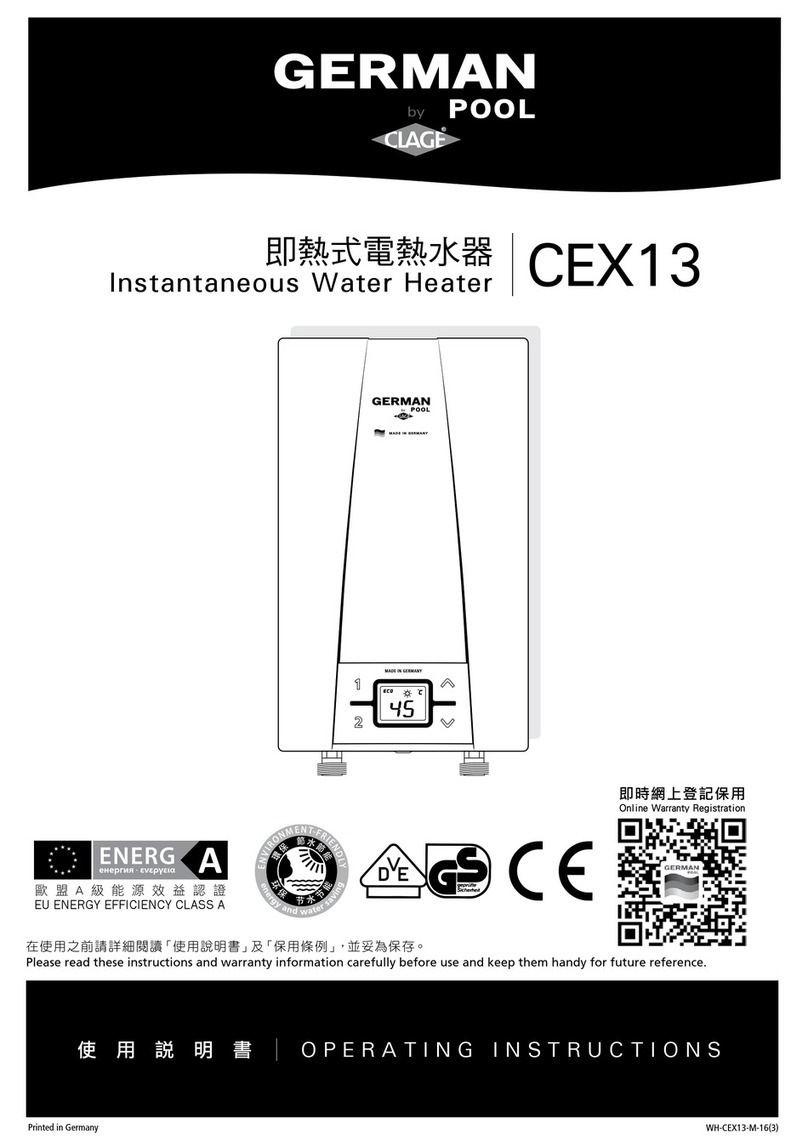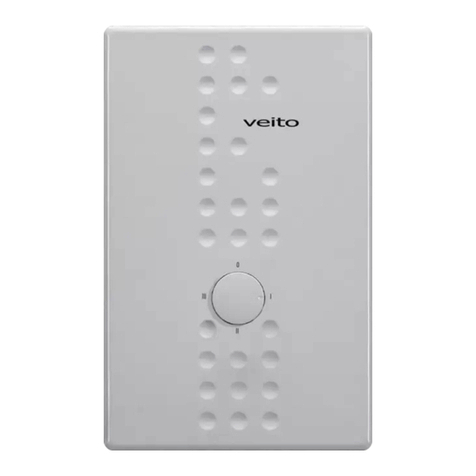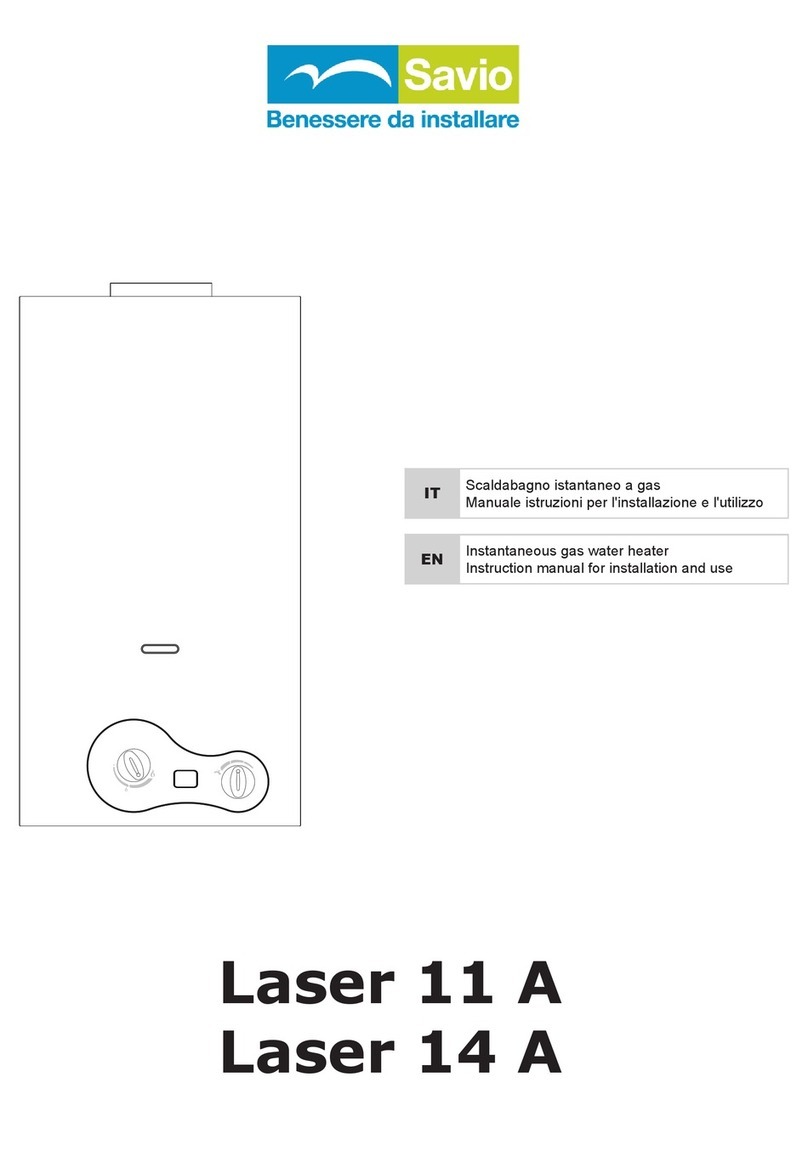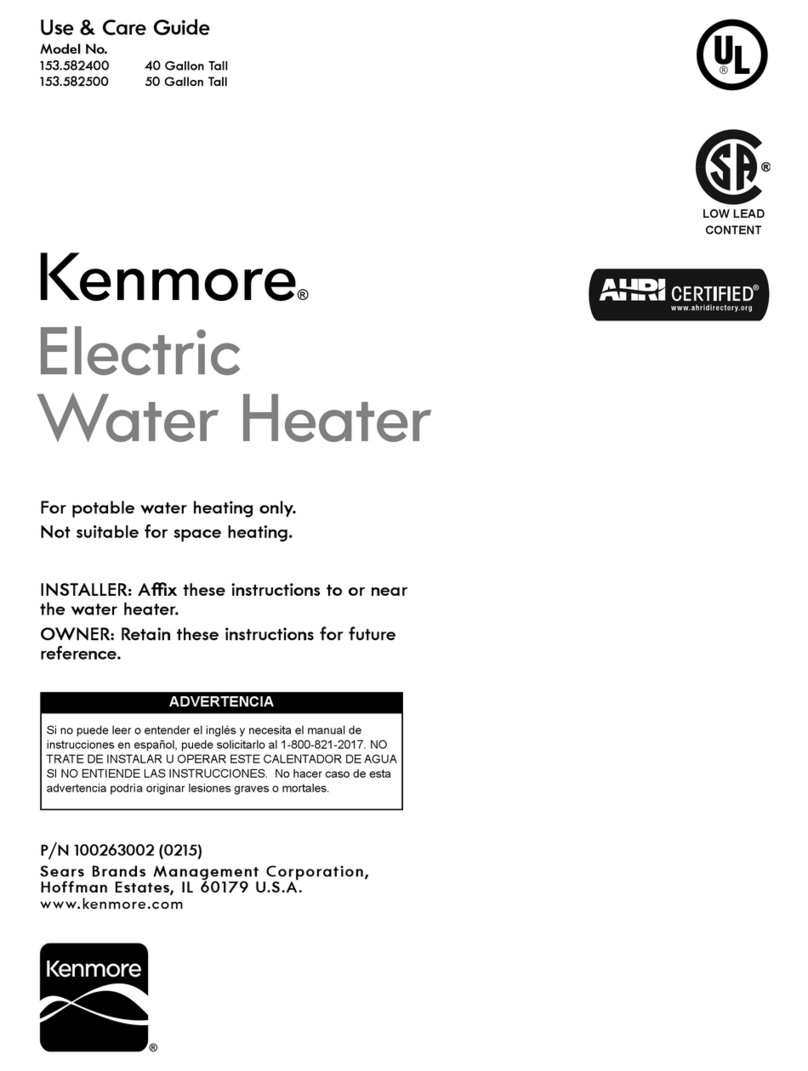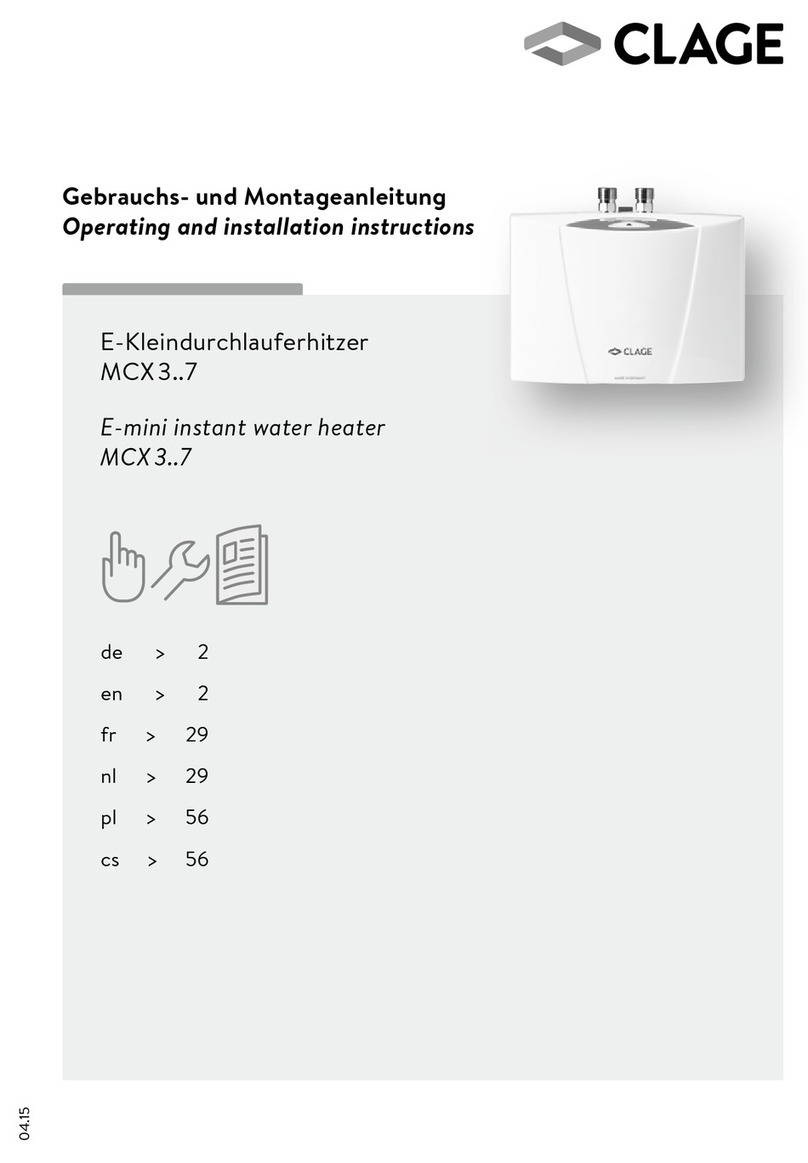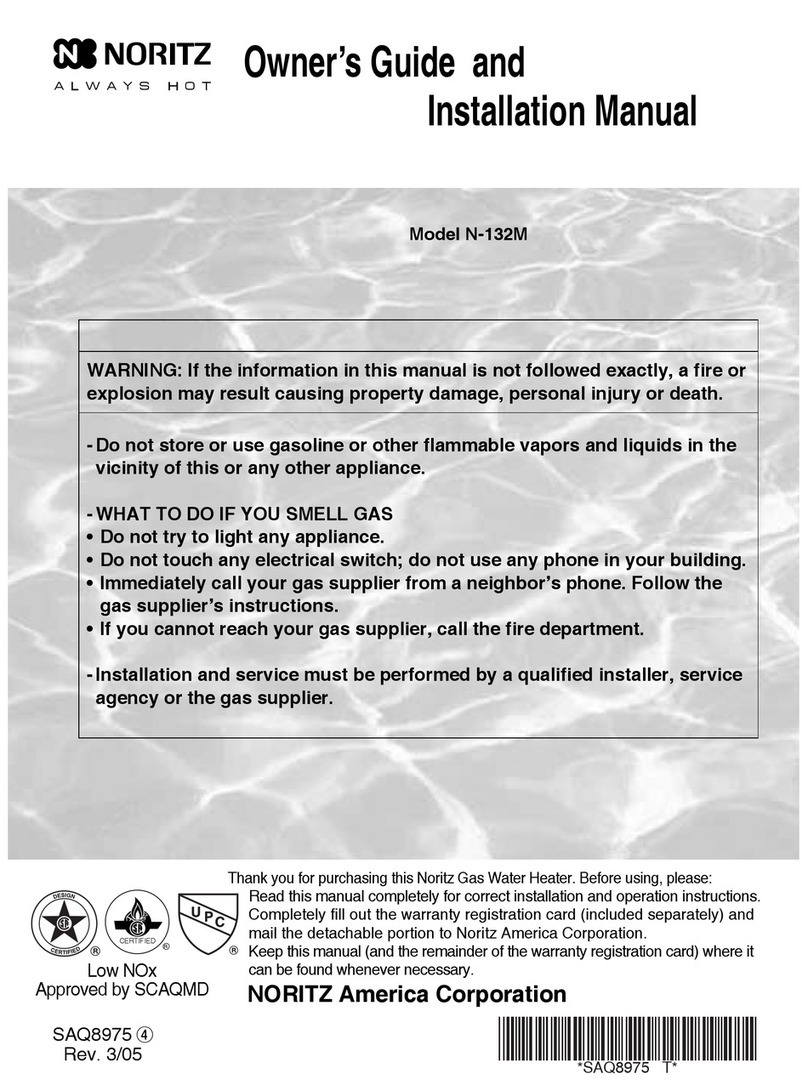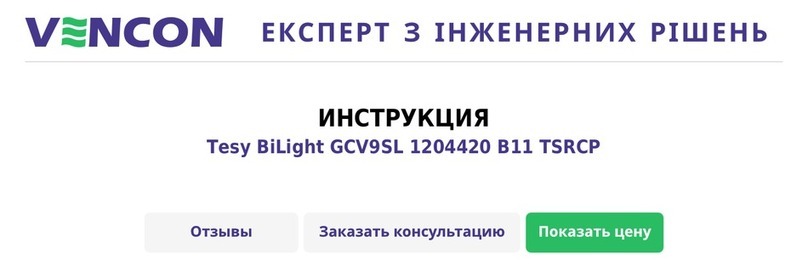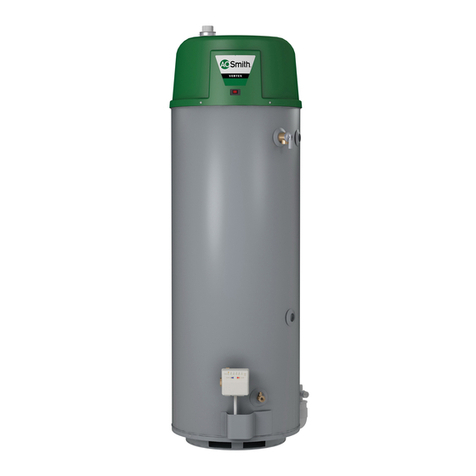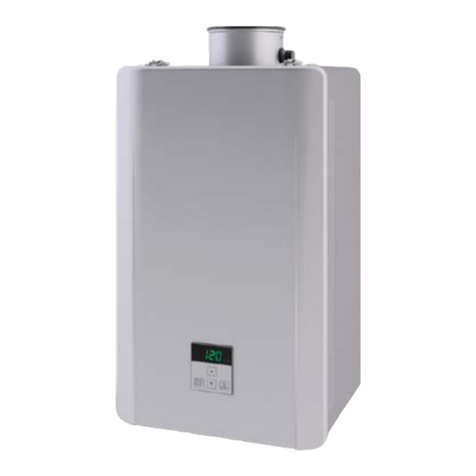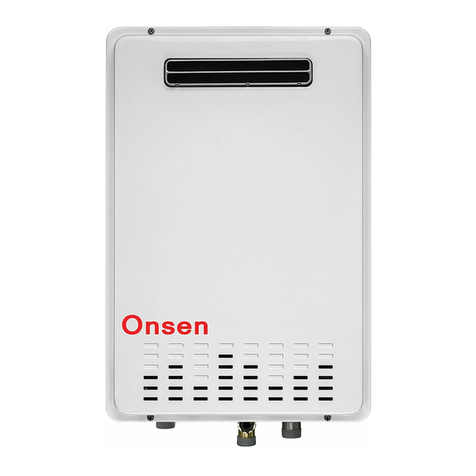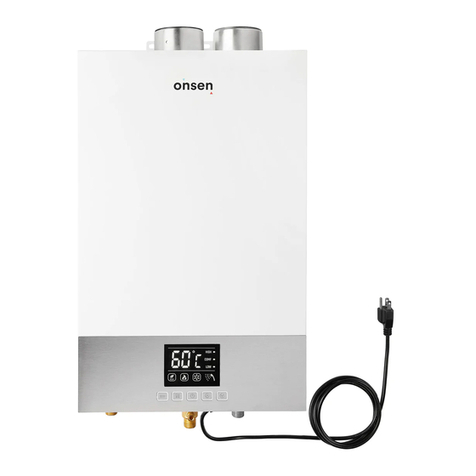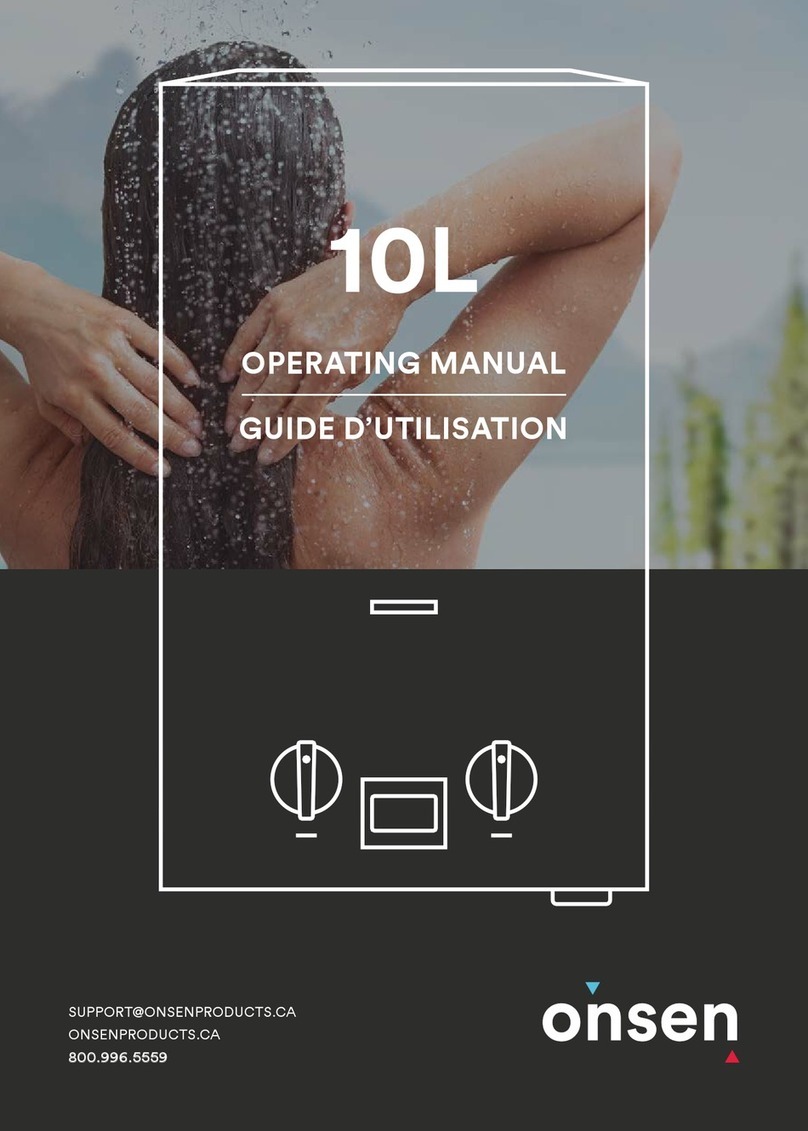
onsenproduits.ca 800-996-5559
LES DOMMAGES CAUSÉS PAR LE GEL NE SONT PAS COUVERT PAR LA GARANTIE DU MANUFACTURIER.
CONCERNANT L’INSTALLATION ET L’UTILISATION DU CHAUFFE-EAU EN RÉGIONS OÙ L’AIR EXTÉRIEUR PEUT ATTEINDRE DES
TEMPÉRATURES DE CONGÉLATION, IL EST IMPORTANT DE PRENDRE LES MESURES NÉCESSAIRES POUR ÉVITER LES DOMMAGES
POUVANT ÊTRE CAUSÉS PAR LE GEL.
* L’INSTALLATION ET LE SERVICE DE CET APPAREIL DOIVENT ÊTRE EFFECTUÉS PAR UN INSTALLATEUR QUALIFIÉ. DE PLUS, IL EST
FORTEMENT RECOMMANDÉ DE FAIRE APPEL À UN INSTALLATEUR QUI TRAVAILLE RÉGULIÈREMENT AVEC DES SYSTÈMES DE VENTILATION
POUR EFFECTUER L’INSTALLATION.
** ASSUREZ-VOUS DE TOUJOURS EFFECTUER L’INSTALLATION CONFORMÉMENT AUX CODES LOCAUX OU, EN L’ABSENCE DE CES
DERNIERS, AU NATIONAL FUEL GAS CODE ANSI Z223.1/NFPA 54, OU AU CODE D’INSTALLATION DU GAZ NATUREL ET DU PROPANE
CSA B149.1.
Il existe deux types d’application pour alimenter le chauff e-eau en air de combustion :
RECOMMANDATIONS CONCERNANT LES RISQUES DE GEL ASSOCIÉS À L’AIR
DE COMBUSTION
AVERTISSEMENT: RISQUES DE DOMMAGES CAUSÉS PAR LE GEL
LIRE ATTENTIVEMENT AVANT L’INSTALLATION*ET L’USAGE DE CE PRODUIT
1
DRAINER L’EAU DU CHAUFFEEAU
Lors de températures de congélation, assurez-vous à ce que le chauff e-eau et ses conduites d’eau soient adéquatement
protégés contre le gel. En cas de panne de courant ou pour toute installation de type chalet ou autre résidence
secondaire n’étant pas chauff é à l’année, le chauff e-eau doit être drainé manuellement pour éviter les dommages
pouvant être causés par le gel. Pour se faire, il est recommandé de souffl er de l’air comprimé dans le raccord d’entrée
d’eau pour éliminer l’eau résiduelle de la tuyauterie qui s’écoulera par le raccord de sortie d’eau.
APPLICATION 1
Ventilation indirecte
(air de combustion provenant de la pièce) **
OU APPLICATION 2
Ventilation directe
(air de combustion provenant de l’extérieur)
Veuillez lire et suivre les directives d’installation relatives à chaque type d’application ci-dessous:
ONSEN 14L
Application 1 Directives d’installation
Ventilation indirecte
(air de combustion
provenant de la pièce)
Il n’y a pas de risque de dommages associé au gel puisque l’air de combustion est aspiré de la
pièce chauée où est installé le chaue-eau (voir exemple ci-dessous à la Figure 1 ).**
L’application de ventilation indirecte ore l’avantage d’une installation simpliée comparative-
ment à l’application de ventilation directe.
À noter que pour ce type d’installation, il n’est pas recommandé d’installer le chaue-eau dans
un espace restreint (ex : placard).
L’application de ventilation indirecte requiert un volume d’air susant pour assurer le bon
fonctionnement du chaue-eau. Pour le volume d’air intérieur requis, veuillez-vous référer aux
codes locaux ou, en l’absence de ces derniers, au National Fuel Gas Code ANSI Z223.1/NFPA 54,
ou au Code d’installation du gaz naturel et du propane CSA B149.1.
